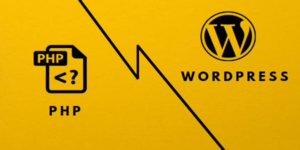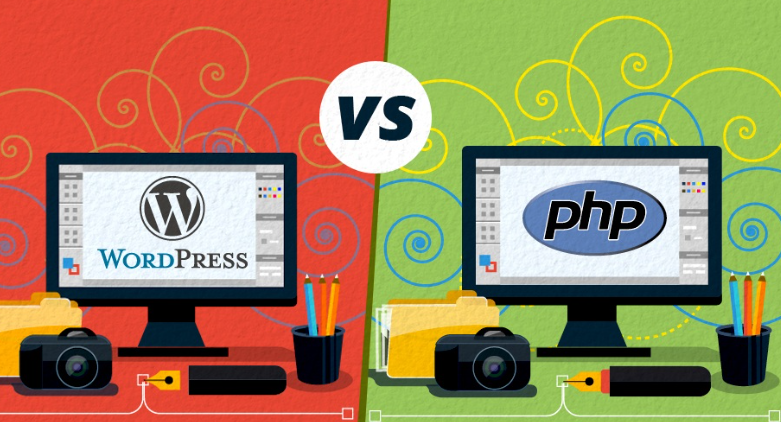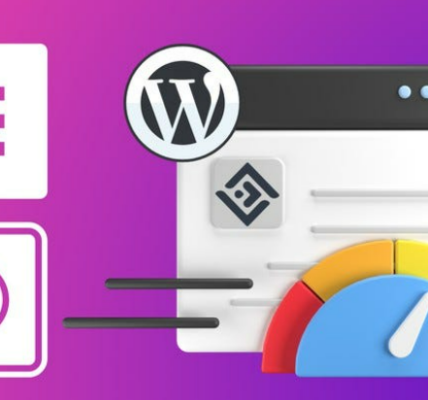Powering the Web: The Dynamic Duo of WordPress and PHP
In the ever-expanding digital landscape, the synergy between WordPress and PHP stands as a cornerstone of web development. This in-depth exploration navigates through the intricate web of these technologies, unraveling their symbiotic relationship, and understanding how they collectively shape the online presence of millions.

WordPress: The Pinnacle of Content Management
At the heart of countless websites, WordPress reigns supreme as the quintessential content management system (CMS). Initially conceived as a blogging platform, WordPress has evolved into a versatile CMS that powers over a third of the web. Its intuitive interface, extensibility through plugins, and a vibrant community contribute to its unwavering popularity among bloggers, businesses, and developers alike.
The PHP Backbone: Powering Dynamic Web Pages
PHP, a server-side scripting language, forms the backbone of dynamic web pages. With its seamless integration into HTML, PHP enables the creation of dynamic and interactive content. Its server-side nature ensures that the heavy lifting is done on the server before the final output is sent to the client’s browser, enhancing performance and allowing for the creation of feature-rich, data-driven websites.
The Marriage of WordPress and PHP
WordPress is built on PHP, and this integration is the driving force behind its dynamic capabilities. When a user requests a WordPress page, PHP processes the code, fetches content from the database, and dynamically generates the HTML that the user sees. This dynamic nature enables features like real-time updates, personalized content, and seamless interactions, creating a user experience that goes beyond static websites.
Themes and Templates
WordPress themes, the visual presentation layer of a website, are powered by a combination of PHP and HTML. PHP is used to dynamically insert content into predefined areas of a theme, allowing for a consistent structure while still accommodating diverse content types. The flexibility of PHP enables developers to create custom themes tailored to the unique needs of websites, ensuring a visually appealing and user-friendly interface.
Plugins: Extending Functionality with PHP
The extensibility of WordPress is largely attributed to plugins, and PHP is the language of choice for developing these powerful add-ons. Whether it’s enhancing SEO, integrating e-commerce functionality, or adding social media feeds, plugins leverage PHP to seamlessly integrate new features into a WordPress site. The robust plugin ecosystem is a testament to PHP’s versatility and the collaborative spirit of the WordPress community.
Customization and Flexibility
The combination of WordPress and PHP provides a canvas for limitless customization. Developers can create bespoke solutions, tailoring websites to meet specific requirements. PHP’s open-source nature aligns with WordPress’s commitment to customization, allowing developers to delve into the core code, extend functionalities, and adapt the platform to diverse use cases.
Security
Security is a paramount concern in the online realm, and both WordPress and PHP actively address this challenge. WordPress regularly releases updates to patch vulnerabilities, and PHP incorporates security features to protect against common threats. The responsibility for a secure website is a shared endeavor, with users, developers, and the open-source communities collaborating to fortify the defenses of websites powered by this dynamic duo.
Performance Optimization
The performance of a WordPress site is often a focal point for developers, and PHP plays a crucial role in optimization strategies. Caching mechanisms, code minification, and efficient database queries, all orchestrated by PHP, contribute to faster page load times. As the digital landscape emphasizes speed and responsiveness, the collaborative efforts of WordPress and PHP empower developers to fine-tune performance.
Gutenberg: The Evolution of Content Creation
The introduction of the Gutenberg editor in WordPress signifies a paradigm shift in content creation. Built on React.js, Gutenberg brings a modern, block-based approach to content editing. While JavaScript plays a central role in Gutenberg’s interactivity, PHP continues to be the backbone for processing and rendering the dynamic content generated through this revolutionary editor.
WordPress REST API
In an era of interconnected digital experiences, the WordPress REST API allows for seamless integration with other platforms and services. While JavaScript often takes the spotlight in building headless WordPress setups, PHP plays a pivotal role in handling server-side requests and responses, facilitating the flow of data between WordPress and external applications.
Challenges and Future Developments
Despite its robustness, the WordPress-PHP alliance faces challenges, such as the need for continued performance enhancements, staying abreast of security threats, and addressing the evolving landscape of web technologies. However, ongoing developments, community-driven innovations, and a commitment to staying relevant position WordPress and PHP for a future where they remain influential forces in web development.
Conclusion
In conclusion, the dynamic synergy between WordPress and PHP has left an indelible mark on the web development landscape. From blogs and small business websites to enterprise-level applications, their collaboration continues to empower developers and businesses alike. The extensibility, customization, and community-driven ethos of this powerful duo ensure that they will play a central role in shaping the online experiences of the future. As WordPress and PHP evolve with the digital landscape, their dynamic legacy persists, leaving an enduring imprint on the way we navigate and interact with the web.





